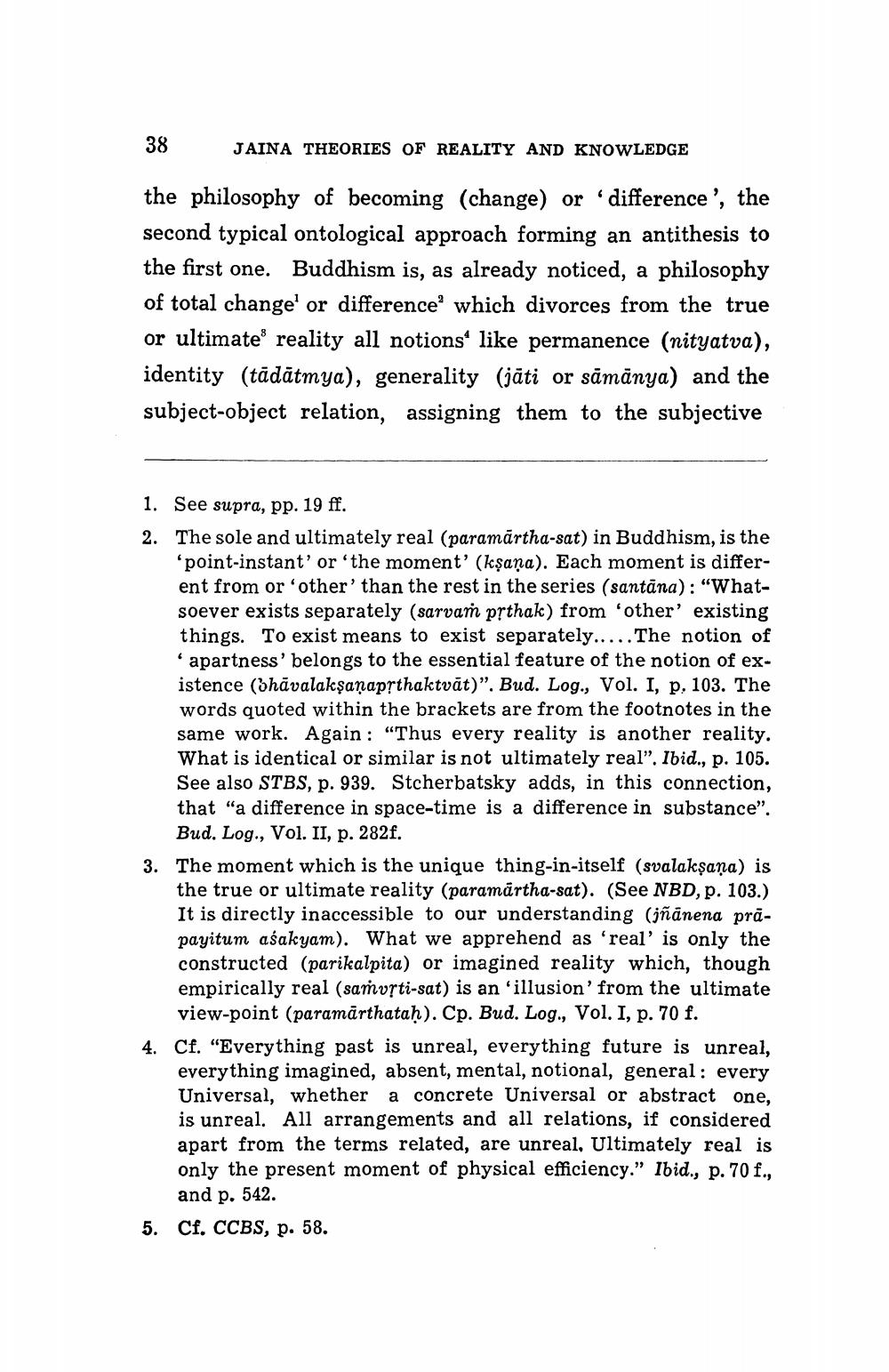________________
38 JAINA THEORIES OF REALITY AND KNOWLEDGE the philosophy of becoming (change) or difference ', the second typical ontological approach forming an antithesis to the first one. Buddhism is, as already noticed, a philosophy of total change' or difference which divorces from the true or ultimate reality all notions like permanence (nityatva), identity (tādātmya), generality (jāti or sāmānya) and the subject-object relation, assigning them to the subjective
1. See supra, pp. 19 ff. 2. The sole and ultimately real (paramārtha-sat) in Buddhism, is the
'point-instant' or 'the moment' (kşaņa). Each moment is different from or other than the rest in the series (santāna): "Whatsoever exists separately (sarvaṁ pşthak) from 'other' existing things. To exist means to exist separately..... The notion of
apartness' belongs to the essential feature of the notion of existence (hāvalakşanapěthaktvāt)". Bud. Log., Vol. I, p. 103. The words quoted within the brackets are from the footnotes in the same work. Again : "Thus every reality is another reality. What is identical or similar is not ultimately real". Ibid., p. 105. See also STBS, p. 939. Stcherbatsky adds, in this connection, that "a difference in space-time is a difference in substance". Bud. Log., Vol. II, p. 282f. The moment which is the unique thing-in-itself (svalakṣaṇa) is the true or ultimate reality (paramartha-sat). (See NBD, p. 103.) It is directly inaccessible to our understanding (jñanena prapayitum aśakyam). What we apprehend as 'real' is only the constructed (parikalpita) or imagined reality which, though empirically real (samvști-sat) is an 'illusion' from the ultimate view-point (paramarthatah). Cp. Bud. Log., Vol. I, p. 70 f. Cf. "Everything past is unreal, everything future is unreal, everything imagined, absent, mental, notional, general: every Universal, whether a concrete Universal or abstract one, is unreal. All arrangements and all relations, if considered apart from the terms related, are unreal, Ultimately real is only the present moment of physical efficiency.” Ibid., p. 70 f.,
and p. 542. 5. Cf. CCBS, p. 58.




